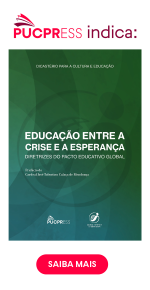Submissions
Submission Preparation Checklist
As part of the submission process, authors are required to check off their submission's compliance with all of the following items, and submissions may be returned to authors that do not adhere to these guidelines.- The submission has not been previously published, nor is it under review by another journal (or an explanation has been provided in the Comments to the Editor).
- The submission file must be in the publication template provided by the journal, in OpenOffice, Microsoft Word, RTF, or WordPerfect formats.
- When available, the URLs of the references have been provided.
- The text follows the stylistic and bibliographical requirements described in the Guidelines for Authors, found in About the Journal.
- If you submit to a peer-reviewed journal section, the instructions in Guaranteeing a blind review have been followed.
- By submitting, the author confirms that they have read the journal's Editorial Policiesin full.
Copyright Notice
The author(s) transfer(s), by way of assignment, to EDITORA UNIVERSITÁRIA CHAMPAGNAT, a legal entity governed by private law, registered with the CNPJ/MF under no. 76.659.820/0009-09, established at Rua Imaculada Conceição, no. 1155, Prado Velho, CEP 80.215-901, in the city of Curitiba/PR, the rights specified below and undertakes to comply with the following:
- The authors affirm that the work/material is of their authorship and assume total responsibility towards third parties, whether of a moral or patrimonial nature, due to its content, declaring from the outset that the work/material to be delivered is original and does not infringe any intellectual property rights of third parties.
- The authors agree to fully, ultimately, and permanently sign over the ownership rights of the paper/material to EDITORA UNIVERSITÁRIA CHAMPAGNAT, free of charge and on an exclusive basis.
- The ASSIGNEE will use the paper/material in the way that best suits them, in print and online, including on the website of the EDITORA UNIVERSITÁRIA CHAMPAGNAT journal, and may use, enjoy, and dispose of it, in whole or in part, for:
- Authorize its use by third parties as an integral part of other papers.
- Edit, record, and print as many times as necessary.
- Reproduce in the quantities deemed necessary, in tangible and intangible forms.
- Adapt, modify, condense, summarize, reduce, compile, enlarge, alter, mix with other content, including images, graphics, digital objects, infographics, and hyperlinks, illustrating, diagramming, fractioning, updating, and carrying out any other transformations, with the participation or express authorization of the authors being required.
- Translate into any language.
- Include in a phonogram or audiovisual production.
- Distribute.
- Distribute using a cable, optical fiber, satellite, waves, or any other system that allows the user to select the work or production to receive it at a time and place previously determined by the person making the demand and in cases where access to the works or productions is caused by any system that implies payment by the user.
- Include and store in a physical, digital, or virtual database, including the cloud.
- Communicate directly and indirectly to the public.
- Include in a database, archive in printed form, store on a computer, including in a cloud system, microfilm, and other forms of archiving of this kind;
- Commercialize, disseminate, broadcast, publish, etc.
- Any other existing or invented form of use.
- The authors agree to sign over the rights of the first publication (unpublished) to the Journal, licensed under the CREATIVE COMMONS ATTRIBUTION LICENSE, which allows the work to be shared with acknowledgment of authorship.
- The authors authorize the reproduction and citation of their work in institutional repositories, personal pages, and scientific papers, among others, provided the source is cited.
- This transfer is valid throughout the national territory and abroad.
- This agreement shall come into force on the date of its signature and is entered into by the parties on an irrevocable and irreversible basis, binding the parties and their successors in title.
- Failure by EDITORA UNIVERSITARIA CHAMPAGNAT to accept the article will automatically render this declaration null and void.
Privacy Statement
We would like to inform you that Editora Universitária PUCPRESS of the Pontifical Catholic University of Paraná (PUCPR) has adopted the Creative Commons license for its collection of open-access scientific journals and has set the standard of adopting an attribution license (CC - BY) for its contents.



